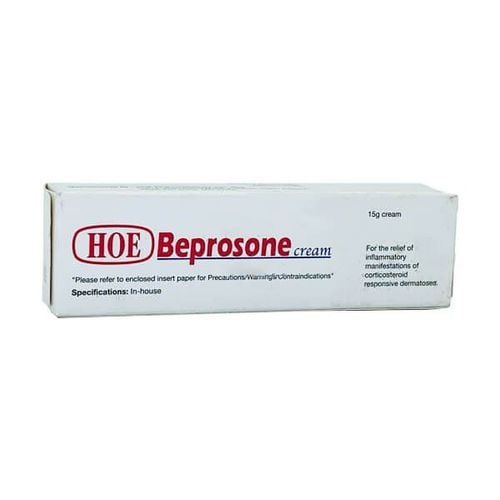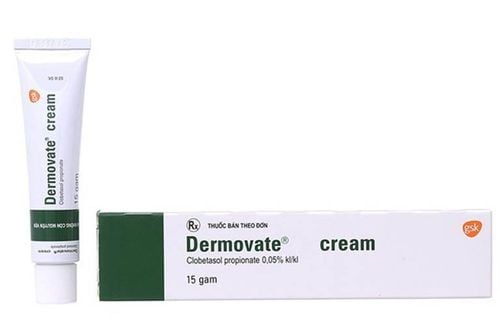This is an automatically translated article.
Pesancort (fusidic acid) is an antibiotic used to treat localized infiltrative lesions, psoriasis, keloids, lichen planus hypertrophy, lupus erythematosus multiforme, discoid lupus erythematosus and some inflammatory skin diseases. insect bites...1. Uses of Pesancort
Pesancort drug with the main ingredient is Fusidic Acid that has a bacteriostatic and bactericidal effect. Besides, the Betamethasone Valerate component in the drug is also a synthetic corticosteroid with anti-inflammatory and anti-allergic properties that help reduce redness and itching on the skin.
Based on the above properties, Pesancort is often used to treat the following problems:
Localized infiltrative lesions; Liken flat hypertrophy; Keloids; Psoriasis ; Contact dermatitis ; Allergic dermatitis ; Discoid lupus erythematosus (DLE); Lupus erythematosus multiforme; Insect stings. Currently on the market, Pesancort is made in the form of a tube of skin cream with concentrations: 5g, 10g and 15g.
2. Instructions for using Pesancort
Pesancort drug is used for external application, absolutely do not apply to the eyes.
How to use:
Wash the infected skin before applying the medicine; Use clean hands to apply a thin layer of medicine to the area to be treated, frequency 1-2 times/day; *Note:
Avoid applying the medicine in too thick layers; Limit the duration of use of the drug to 7 days (except in the case of acne treatment). Avoid long-term treatment, especially for facial skin, folds, diaper rash, in infants and older children; The safety and effectiveness of Pesancort topical in children have not been established. However, it is still best to limit the use of topical corticosteroids such as Betamethasone to apply to young children (especially infants). It should only be used under the close supervision of a physician.

Thuốc Pesancort được sử dụng để bôi ngoài da
3. Side effects of drugs
In some cases, long-term use of high doses of Pesancort topical can thin and striate the skin, dilate superficial blood vessels, especially when the user is using a bandage or applying the medicine in the skin with many folds.
In addition, patients may also experience some uncommon side effects such as allergic dermatitis, urticaria, angioedema.
If you encounter any of the above problems, tell your doctor about unwanted side effects when using the drug.
4. Contraindications to the use of Pesancort
Pesancort should not be used in the following cases:
Sensitivity to the components of the drug; Fungal, viral and bacterial infections; Patients with liver failure ; Pregnant and lactating women (consider with caution). If irritation or sensitization is observed, treatment with this drug should be discontinued and an alternative medicine consulted with your doctor.
5. Drug Interactions Drugs can interact with Pesancort topical and cause the following reactions:
Ciprofloxacin (generating antagonistic reactions); Penicillin ; Antiviral protease inhibitors (increased risk of toxicity); Paracetamol (increased risk of hepatotoxicity); Glycoside digitalis (increased risk of arrhythmias, hypokalemia); Antidiabetic drugs , Insulin (increasing blood glucose levels); Phenobarbital, Phenytoin, Rifampicin, Ephedrin (increases metabolism and reduces the therapeutic effect of Betamethasone); Coumarin anticoagulants (increase or decrease the anticoagulant effect); Hopefully, the above article has provided readers with the information they need to know about the use of Pesancort and how to use it reasonably and safely. If you have any questions during the use of the drug, the patient should contact the doctor for direct advice and support.
Please dial HOTLINE for more information or register for an appointment HERE. Download MyVinmec app to make appointments faster and to manage your bookings easily.













